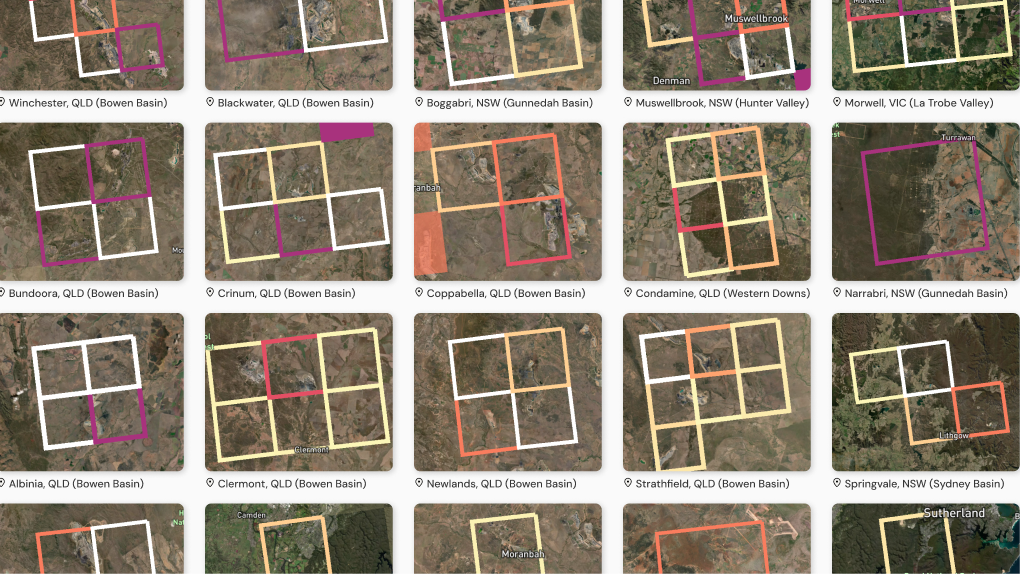Major emitters in Australia may be producing more than twice as much methane as their estimated reporting in Australia’s National Inventory,
The Superpower Institute (TSI) has revealed today via its analysis from its new methane monitoring tool, Open Methane.
Using a combination of atmospheric modelling and satellite measurements, Open Methane has demonstrated clearly that the Australian government must prioritise improved monitoring and verification. TSI’s results came from international, open data so the potential problems with the inventory are transparent.
But, the methane estimates for the fossil fuel industry in the National Inventory are based on figures that are self-reported, making them less transparent.
Rod Sims, Chairman of the Superpower Institute, said:
“The results are simply astounding. The methodologies used for self-reporting are not transparent and, in some cases, clearly outdated.
“Most problematically, these estimates to the National Inventory are never externally verified. This leaves huge questions about the veracity of these estimation methods, but more importantly about the actual volume of greenhouse gas emissions from different sites and facilities and therefore the National Inventory as a whole. There is a clear need for more rigorous measurement and verification processes to ensure that National Inventory data is accurate and robust.
Rod Sims“There is a clear need for more rigorous measurement and verification processes to ensure that National Inventory data is accurate and robust."
“By investing in the most up to date technical capability to measure emissions at their source - such as methane - we could accurately pinpoint how best to address our emissions and determine whether we are having the impact that is needed.
“Proper measurement of Australia’s emissions is also crucial for achieving TSI’s vision of Australia as a Superpower, specialising in producing energy intensive green exports in such products as green iron, green urea, green transport fuels and green silicon.Australia will need its green products to be recognised internationally by, for example, Europe’s CBAM, which will depend on our emissions measurement credibility.”
TSI Chief Scientist and Emeritus Professor Peter Rayner, a world-leading atmospheric physicist and pioneer in the global measurement of methane said:
“The first results from Open Methane unequivocally show that the Government must mandate source-level measurement to be undertaken by industry operators and that the Government fund a minimum of 12 new monitoring sites around Australia, whose results can be calibrated with those using the satellite technology. The technology is there. If we continue to bury our heads in the sand while methane is being underreported, there will be no integrity in our systems.
Prof. Peter RaynerThe technology is there. If we continue to bury our heads in the sand while methane is being underreported, there will be no integrity in our systems.
“Cutting methane is our single best strategy to combat global heating this decade while we make the changes needed to reduce Australia’s emissions to zero.But methane emissions are not being credibly measured.”
The National Emissions Monitoring Roadmap, launched by The Superpower Institute in late 2023, calls for the establishment of an integrated greenhouse gas monitoring network over Australia. This network would use a mix of ground-based and remote sensing technologies, together with satellite measurements and modelling techniques, to provide a comprehensive understanding of Australia’s emissions.
Background:
The National Inventory is a series of reports published by the Australian Government that estimates Australia’s greenhouse gas emissions. These estimates are important as they form the baseline to determine where our emissions come from, both geographically and from which sectors, and also measure our progress towards goals like the Global Methane Pledge. Without adequate measurement of emissions, Australia risks adopting ineffectual strategies and benchmarks to achieve our reduction targets and damaging our international credibility.
Open Methane takes existing methane emissions estimates from the National Inventory and other similar datasets, distributes them geographically across Australia, and then inputs them into a model that combines weather data and other sources of methane to simulate methane amounts in the atmosphere across the entire country. The result of this model can then be compared with satellite measurements of methane.
To test the Open Methane model, TSI used methane emissions estimates provided by the National Inventory for July 2022. Focusing on the 40 biggest emitters, the model underestimated the methane amounts near the emission hot-spot. Seeing this discrepancy, TSI ran the model again using methane emissions estimates from Climate TRACE, an international non-profit mapping global emissions. The results of this simulation were a much better fit to the satellite observations.
The methane estimates for the fossil fuel industry in the National Inventory are based on figures that are self-reported. The methodologies used for self-reporting are not transparent and, in some cases, clearly outdated. For example, a coal mine might report its estimated emissions by multiplying the amount of coal that was produced by an established “scaling factor”, or the amount of methane emitted by mining a ton of coal, multiplied by the amount of coal that mine produced. However, the actual value used as the scaling factor in these calculations may well be based on decades-old data from the U.S. and ignores the possible variations between methane from place to place. The uncertainty is highlighted by a change in reported emissions from Queensland when the emission factor was increased by 35%.
The Roadmap released by TSI in 2023, complements the Climate Change Authority’s recent 2023 review of the National Greenhouse and Energy Reporting (NGER) scheme. The Authority made several recommendations to improve the integrity and accuracy of methane emission measurement and verification, including improving the verification of ground-based measurements and estimations through the existing methods described above. The Authority also proposed that facility operators pursue best practices in aligning bottom-up ground measurements with top-down verification from satellites, and reconciling the difference through improved ground-based monitoring. For example, by taking measurements of the atmospheric methane concentration both upwind and downwind from a facility, the operator can reliably estimate the methane being emitted from the facility.

